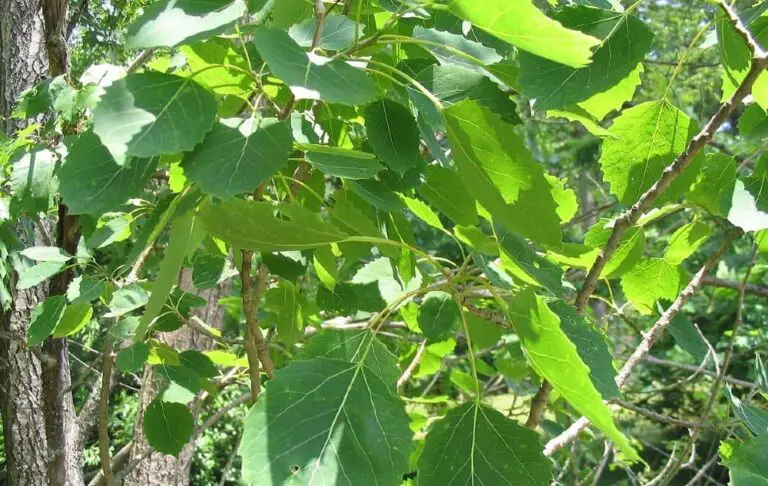21+ Different Types Of Oak Trees With Names, Their Uses And Pictures
Oak trees are renowned globally for their remarkable adaptability, growing successfully in diverse climatic conditions and environments. This versatility is only part of their appeal, as they also possess significant value to humans and animals. The timber from oak trees has a rich history of being used for building projects and crafting beautiful furniture due to its exceptional strength. Additionally, oak’s aesthetic value lies in its unique grain pattern.
Furthermore, oak trees serve as a vital food source for various wild animals, including birds, mammals, and insects. With over sixty species found in the United States alone, oaks offer an incredible variety with subtle differences that make each one distinct. From White Oak to Overcup Oak, there are 21 types of oak trees spread across the globe.
White Oak (Quercus alba)
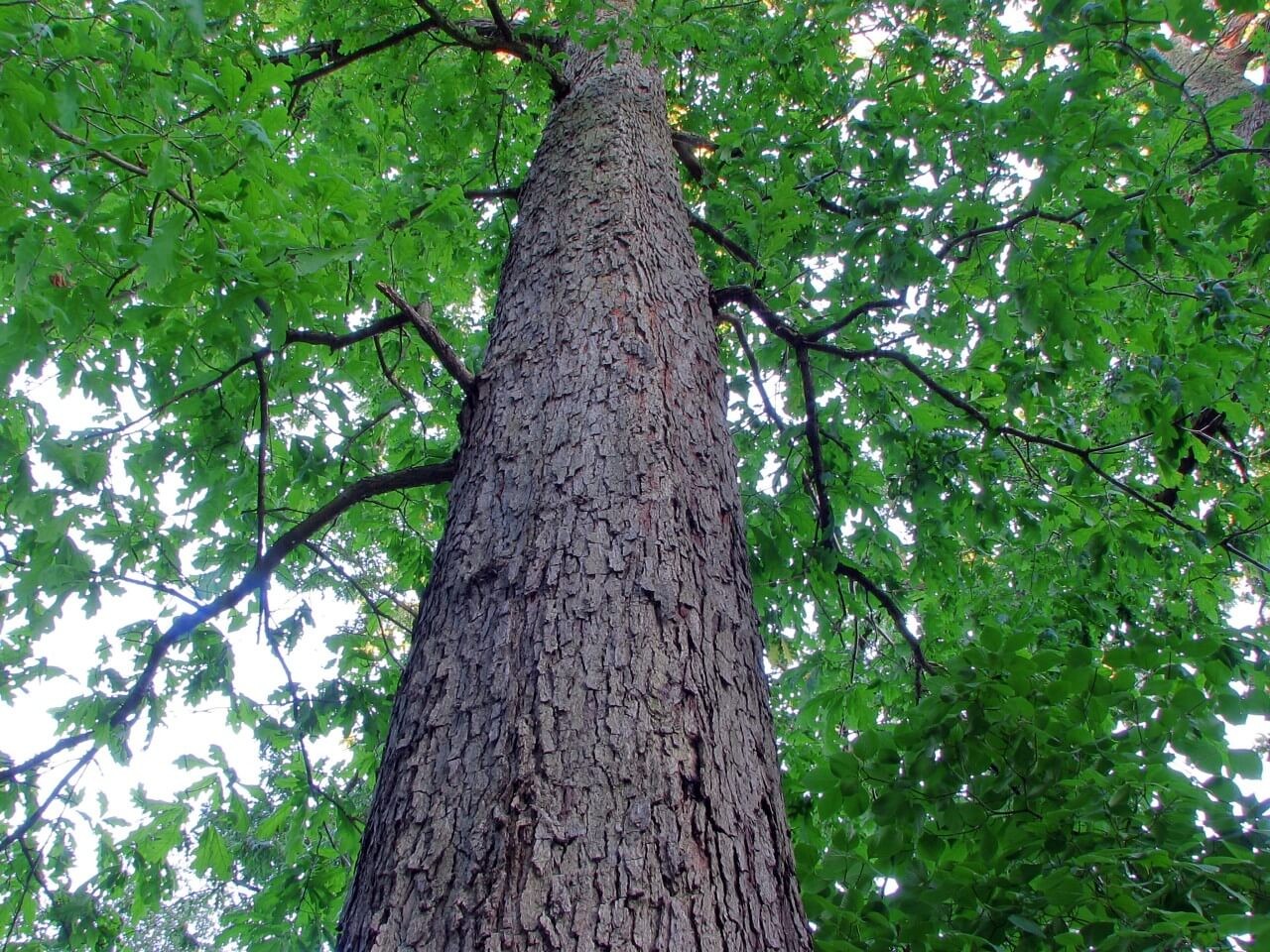
White oak is the most abundant species within the oak family. As a mature tree, it can grow up to 80-150 feet in length, taking roughly five years to reach its full stature. Despite its ‘white’ moniker, the tree’s bark exhibits a distinctive gray hue. Its leaves differ from those of other oaks, being lobed but lacking pointed or bristle-like features. Due to their potential thickness, white oak trees are not ideal for planting near buildings.
The bark of this versatile tree has been employed by indigenous peoples for various medicinal purposes, including the treatment of bronchitis, arthritis, fever, cough, and colds, as well as promoting appetite and facilitating digestion. Additionally, white oak’s exceptional hardwood properties make it a popular choice for crafting furniture, flooring, cabinetry, and boatbuilding.
Black Oak (Quercus velutina)
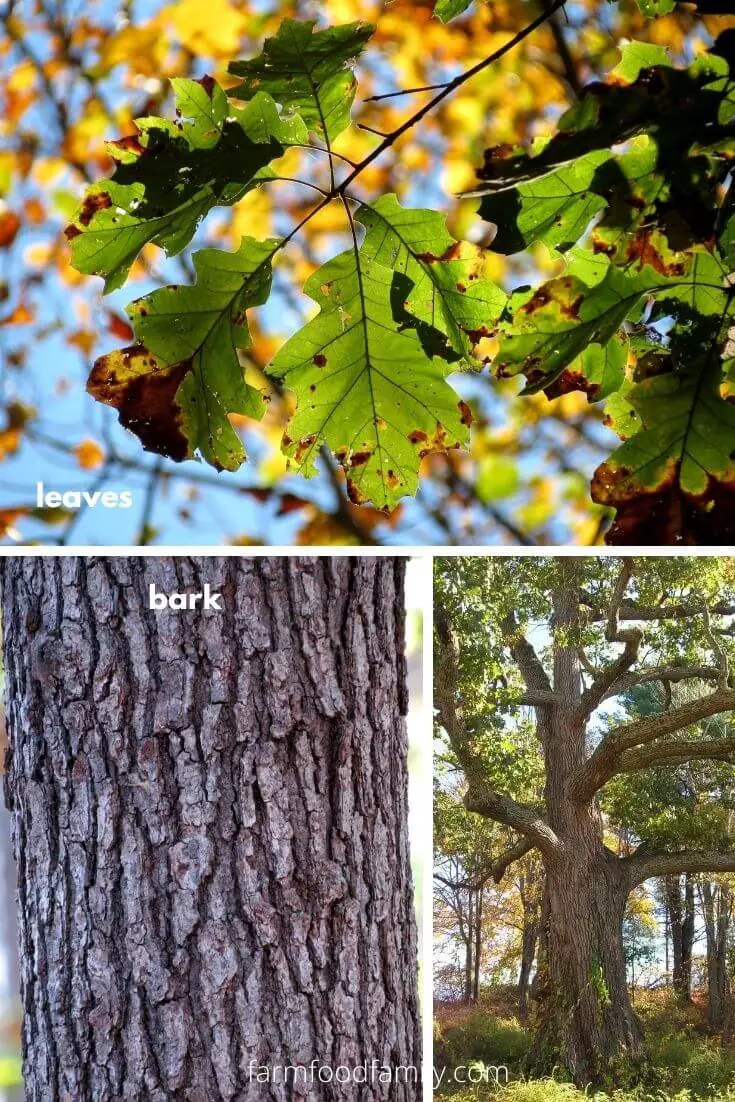
The Black Oak, despite its name, boasts a unique appearance that earned it the original moniker of Yellow Oak. Its pale red-brown hue is a striking feature. This species belongs to the Red Oak family and is native to central North America. As they mature, Black Oaks can reach heights of 65 to 80 feet. Their distinctive leaves showcase a shiny green top surface and matte brown underside. The trees’ wood features a coarse texture.
The species thrives in acidic and dry soil conditions, but it’s intolerant of shade and requires sufficient sunlight. When grown in soils with high pH levels, the leaves turn yellow. Unfortunately, Black Oaks are prone to decay, making them less suitable for structural applications. One major challenge is transplanting these trees due to their extensive root systems. Furthermore, the wood often contains defects, limiting its use in construction projects.
However, it can still be utilized for fence posts and as a fuel source.
Bur Oak (Quercus macrocarpa)
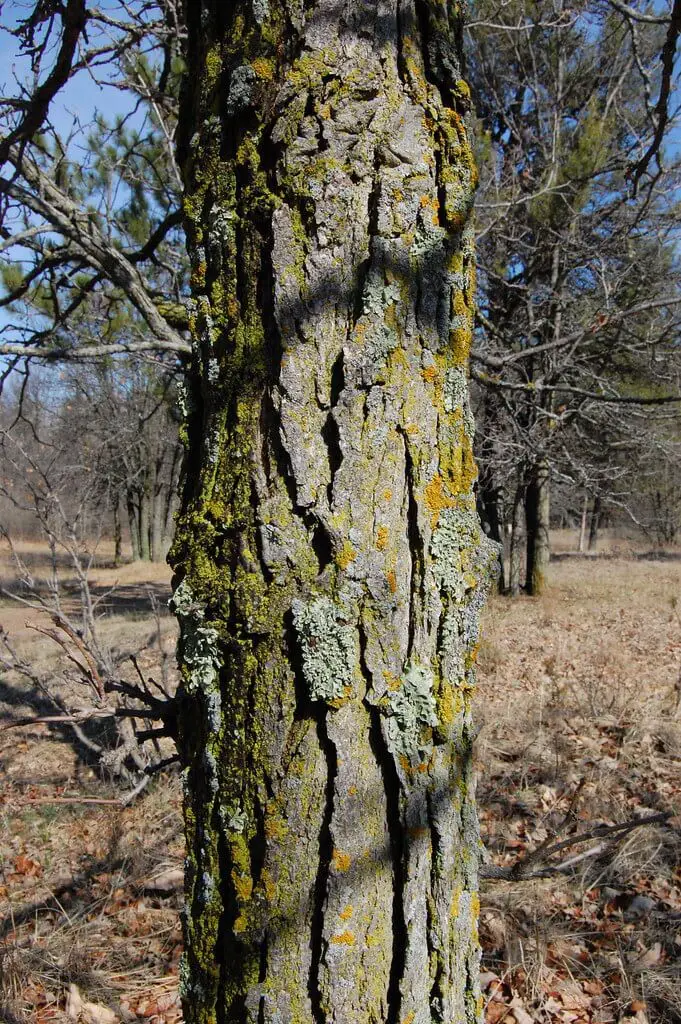
Bur oak is a prominent member of the white oak family, native to North America. When mature, this majestic tree can grow up to 100 feet in length with a diameter of 10 feet. One of its most striking features is the unique maturation process, where each foot of growth takes around a year to develop.
nThe tree’s foliage is characterized by deeply lobed leaves with a vibrant upper surface and a white underside.
The pale brown wood produced by Bur oak has a coarse grain texture, making it highly prized for its versatility.
nBur oak is an urban-friendly species, capable of thriving in polluted environments due to its natural resistance to heat and pollution. Its impressive lifespan can range from 200 to 300 years, allowing it to become a beloved fixture in many landscapes.
nThe tree’s hardwood is exceptionally durable and has numerous applications.
It is often used for flooring, barrel-making, fence posts, and carpentry. Furthermore, Native Americans have long recognized the medicinal value of Bur oak, using its remedies to treat broken bones, heart ailments, diarrhea, and dry wounds.
Chestnut Oak (Quercus montana)
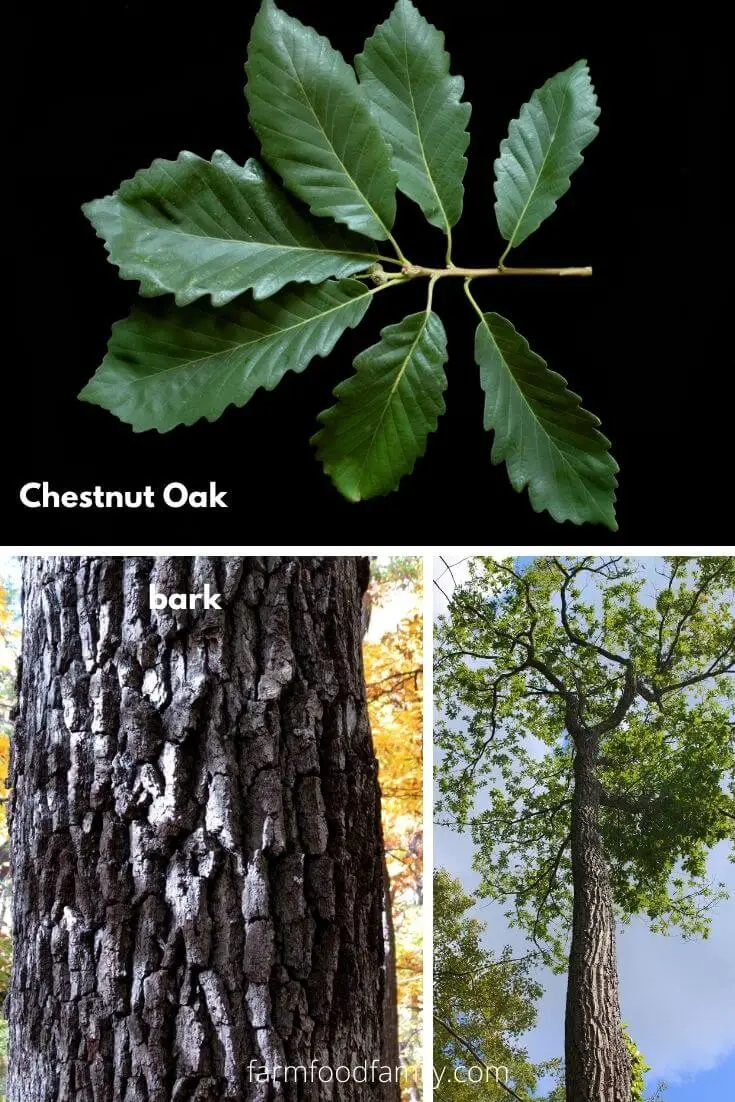
The chestnut oak, aptly named due to its leaf resemblance to the chestnut tree, is a deciduous species that can grow up to 60-75 feet in height. Its canopy boasts a vibrant top with a grayish underside. The tree’s fall color ranges from orange to yellow-brown, and it belongs to the white oak family. Notably, the chestnut oak thrives in limestone soil and can tolerate steep, rocky areas.
One of its unique characteristics is its slow growth rate, taking up to 10 years to mature, which can result in medium to large sizes depending on environmental conditions. This adaptability has made it a popular choice for urban landscapes like streets and parks, where it provides ideal shade. Additionally, the chestnut oak offers fire resistance and serves as a valuable habitat and food source for wildlife.
Cherrybark Oak (Quercus pagoda)
Cherrybark oak is a rapid-growing species that reaches maturity at an impressive 100-130 feet tall. Its bark shares similarities with that of black cherry, earning it its name. Despite their fast growth rate, these trees produce one of the strongest woods in existence, making them an excellent choice for furniture or building construction.
Scarlet Oak (Quercus coccinea)

This majestic oak species reaches maturity between 67 to 100 feet in height, often mistaken for black or pin oak at first glance. However, its uniquely shaped C-shaped leaves serve as a distinguishing feature. The tree’s foliage boasts a vibrant red hue, which remains striking even during the winter months when paired with white snow. As it grows, the oak develops an open and rounded crown, providing ample shade beneath its branches.
Beyond its aesthetic appeal, the oak is prized for its exceptional wood quality, featuring large pores, a coarse texture, and natural resistance to rot. These characteristics make it highly valued for building purposes, as well as ornamental uses. When planted in residential yards, the tree provides perfect shade, but caution should be exercised when placing it along streets due to its mature size.
Laurel Oak (Quercus laurifolia)

The water oak, also known as swamp laurel, is a thriving species found primarily in soggy soil along the east coast of the US. Its evergreen nature allows it to reach maturity between 65 to 80 feet tall, although its lifespan is relatively short-lived, ranging from 30 to 50 years. One of the factors contributing to its abbreviated life expectancy is its vulnerability to heart rot, which can go unnoticed until the tree has already begun to deteriorate and eventually collapse.
This susceptibility makes it less common for these trees to be planted on streets, as they pose a risk of falling onto vehicles or pedestrians. Despite this limitation, the water oak’s rapid growth rate and sturdy upright habit make it a popular choice for furniture-making, a tradition that dates back to the 17th century.
Sessile Oak (Quercus petraea)
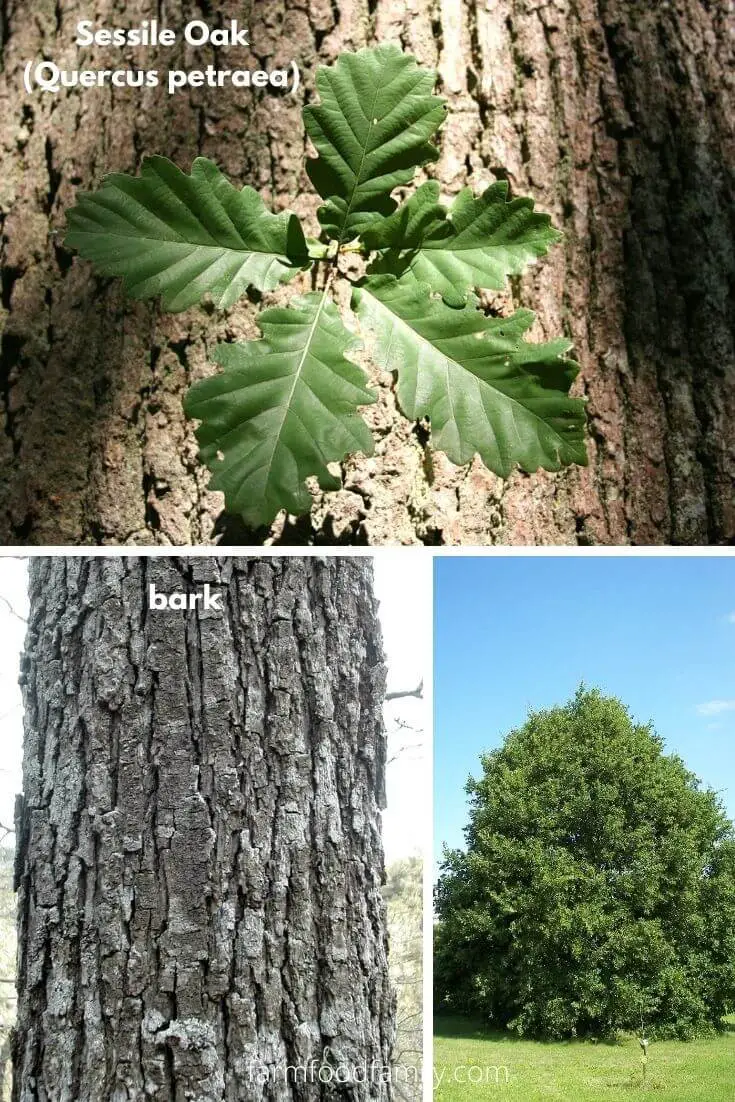
The Quercus robur, also known as the Irish oak, is a majestic species that reaches maturity at heights ranging from 66 to 130 feet. Native to Europe and Ireland, this tree is easily recognizable by its dark olive green leaves, which transform into a warm golden yellow during fall. The Irish oak thrives in hilly regions and woodland areas, where it provides sustenance for birds and other wildlife through its abundant acorn production.
One of the tree’s most striking features is its straight branches and sturdy upright trunk, which allows sunlight to filter through and support a diverse array of flora, including grasses, shrubs, and herbs beneath its canopy.
English Oak (Quercus robur)
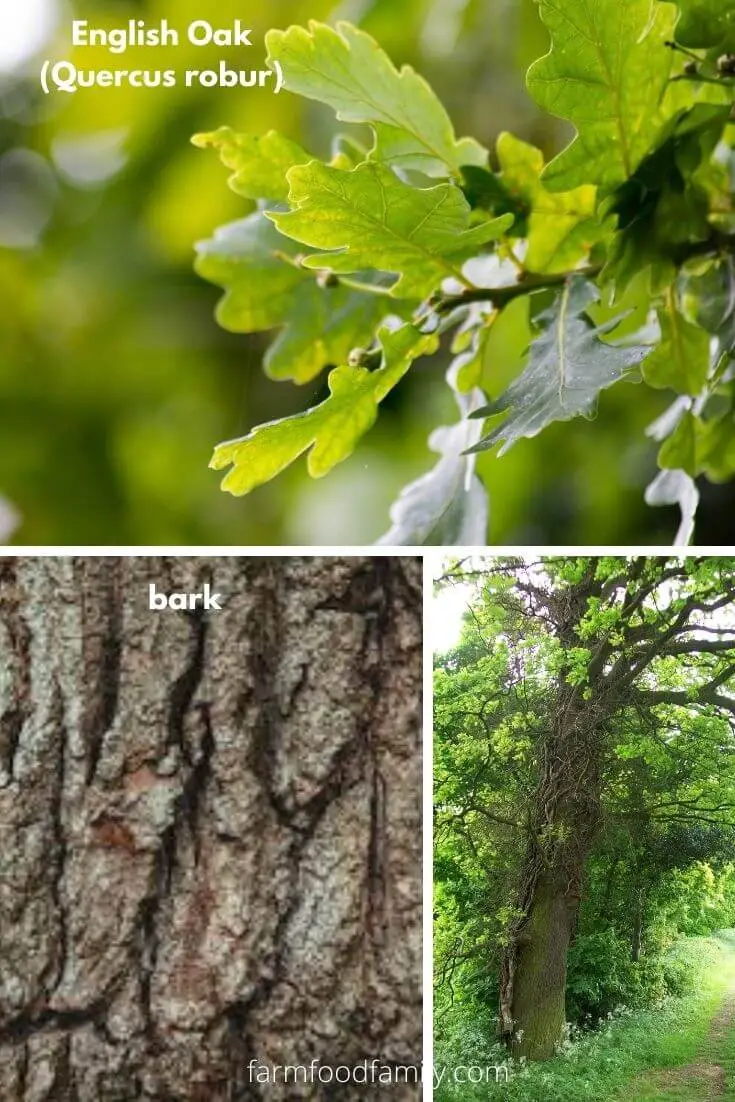
English oak, a stalwart species, boasts an extraordinary longevity. Its robust growth habit yields broad, rounded crowns and sturdy trunks that gradually broaden as the tree matures. A ubiquitous presence in southern and central Britain’s woodlands, English oak is particularly fond of these regions. This majestic tree assumes great ecological significance due to its propensity to support a diverse array of wildlife and foster biodiversity.
Moreover, its remarkable strength makes it an invaluable resource for human endeavors, such as furniture-making and interior carpentry. Its durable nature renders it one of the finest woods for crafting beautiful pieces that will stand the test of time.
Pin Oak (Quercus palustris)
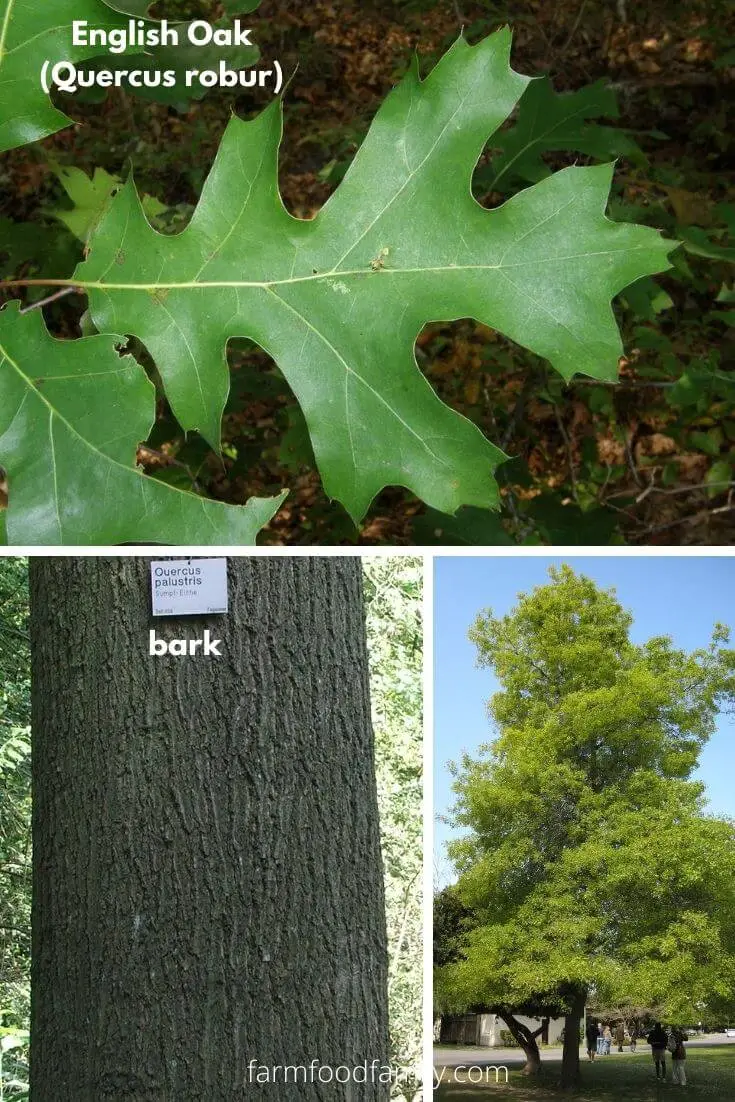
The pin oak is another fast-growing oak species that has gained popularity due to its unique characteristics. Its short and sturdy limbs and branches earned it its name, making it an attractive addition to any lawn or garden. As a native of Illinois, this tree thrives in poor soil conditions, making it an excellent choice for areas with less than ideal growing environments.
One of the most notable benefits of the pin oak is its ability to tolerate pollution, allowing it to grow well even in areas with high levels of pollutants. Additionally, this tree can reach a maximum height of 70 feet and a diameter of 3 feet when fully matured, making it an excellent choice for landscaping purposes.
While the pin oak can be a great addition to any garden or lawn, its lifespan is relatively short, typically lasting around 40 years before it begins to lose its foliage and grow wild. It’s also important to note that this tree does not do well in areas with high pH soil levels, as the leaves may begin to yellow. With proper care and maintenance, however, the pin oak can be a beautiful and thriving addition to any outdoor space.
Holm Oak (Quercus ilex)
The Holm oak, a majestic evergreen tree with Mediterranean origins, boasts broad leaves that can grow up to 20 meters in height, crowned by a rounded canopy. Its distinctive black bark sets it apart from other species. As a popular choice for gardens and parks, the Holm oak is prized for its unique shape, which provides a beautiful visual appeal. Additionally, its salt resistance makes it an ideal candidate for breaking the wind along coastal areas.
Furthermore, the tree’s tolerance of shade and air pollution makes it well-suited for urban environments like city streets. However, it’s worth noting that this species is not well-suited for areas that experience severe winters, as it cannot withstand freezing temperatures and may succumb to disease or dieback. On the flip side, its strength also makes it a valuable source of timber, perfect for crafting furniture or firewood, which burns slowly and provides long-lasting warmth.
Post Oak (Quercus stellata)
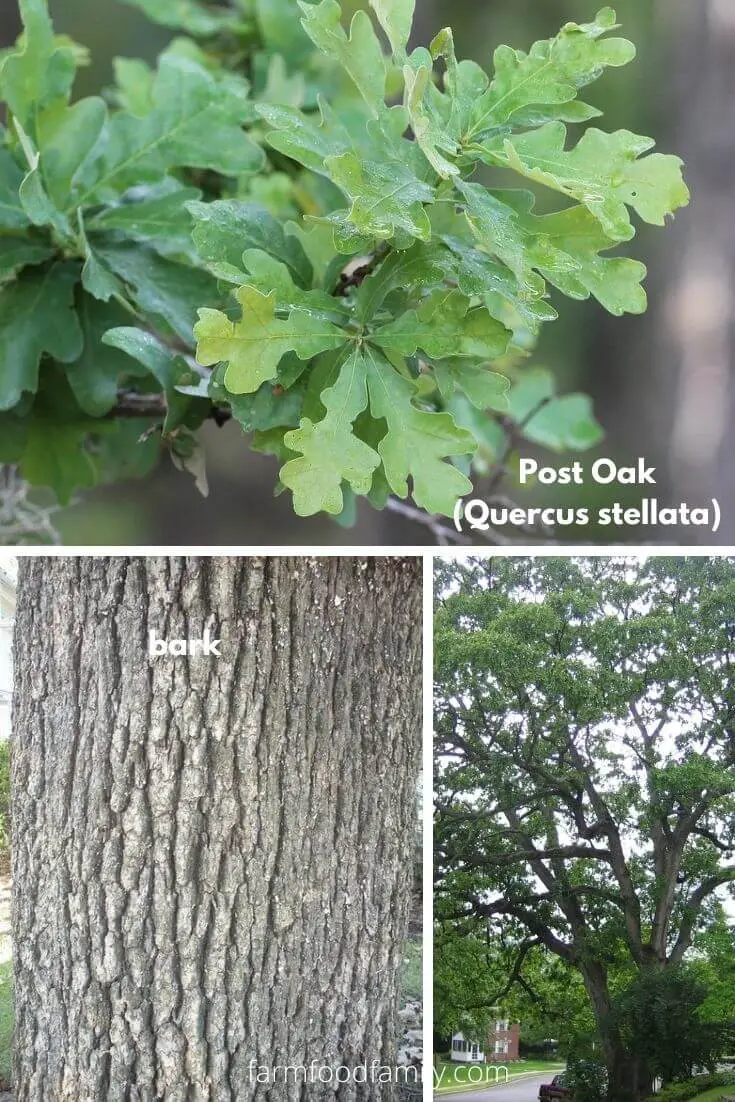
Post oak trees belong to the white oak family, which is native to North America. This slow-growing species has adapted to thrive in dry areas with poor soil conditions, often found on ridges and hills. Despite its sluggish pace, mature Post oaks can reach heights of up to 108 feet with trunks spanning one to two feet in diameter. The tree’s unique characteristics include resistance to fire, drought, and rot, making it a resilient addition to any ecosystem.
The leaves of the Post oak are notable for their rough texture, caused by scattered hairs, and their dark green color. As its name suggests, the wood from this tree is highly valued for use in construction, railroad ties, and posts, due to its exceptional strength and hardness. Additionally, the medicinal properties of the Post oak have been praised for their ability to treat various ailments, reflecting the tree’s rich cultural heritage.
Turkey Oak (Quercus laevis)
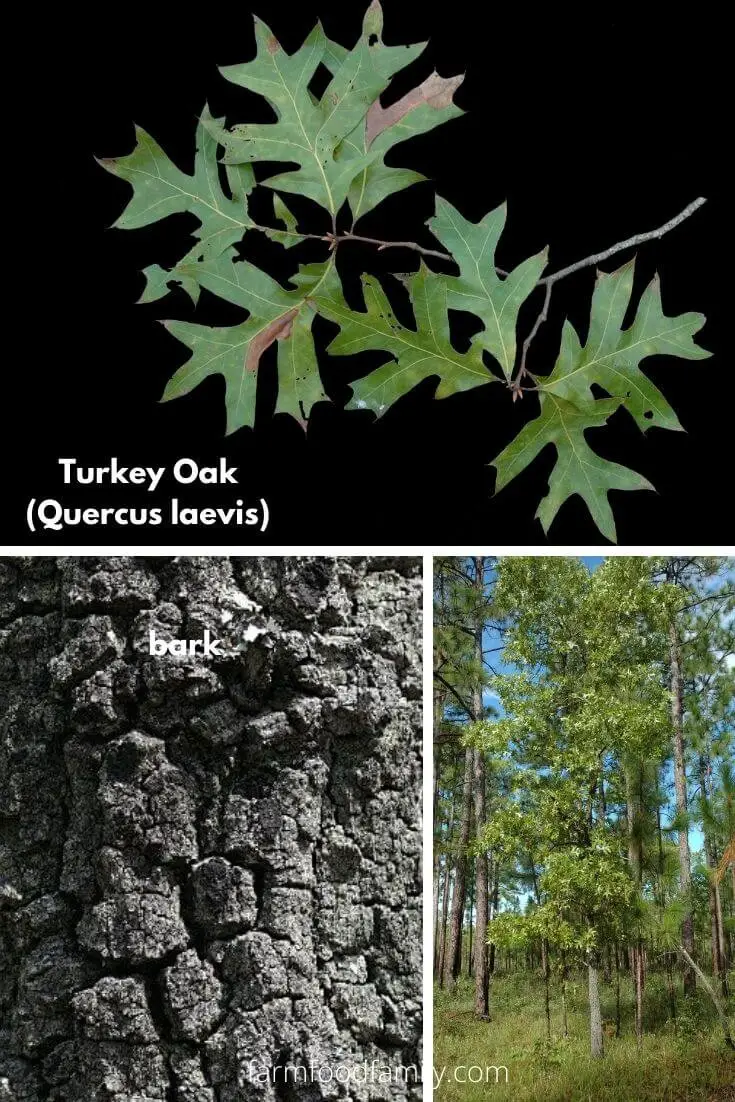
Turkey oak is a type of red oak that typically thrives on coastal plains in south-eastern Europe. One of its most distinctive features is the soft bristle-like texture of its shoot buds, along with brittle-tipped leaf lobes and trunk fissures streaked with orange near the base. This ornamental tree was first introduced to the UK for its beauty, and it’s often found in parks, gardens, and by the roadside due to its limited value to wildlife.
While Turkey oak may not be as robust as other oak species, its timber is still suitable for indoor use, although it may warp or crack when exposed to the elements outside.
Chinkapin Oak (Quercus muehlenbergii)
Chinkapin oak thrives in challenging environments, its ability to grow on limestone and dry areas allowing it to flourish in settings where other trees might struggle. The oak’s tolerance of alkaline soils further expands its range. At first glance, Chinkapin may not appear to be an oak at all, as it lacks the characteristic lobed leaves that define many oak species. However, a closer look reveals coarsely toothed leaves that take on a distinctive yellow-green hue.
When young, Chinkapin oaks display a pyramidal or oval shape, with a pale gray trunk that adds to their unique charm. Despite its differences from other oaks, Chinkapin is highly valued by both humans and wildlife. Humans prize it for its ability to enhance large lawns, gardens, and parks, often using it as a specimen planting to create striking visual displays. In the past, Chinkapin was even used in railroad trail landscaping.
Meanwhile, wild animals depend on the oak’s delicious acorns as a vital food source.
Live Oak (Quercus virginiana)
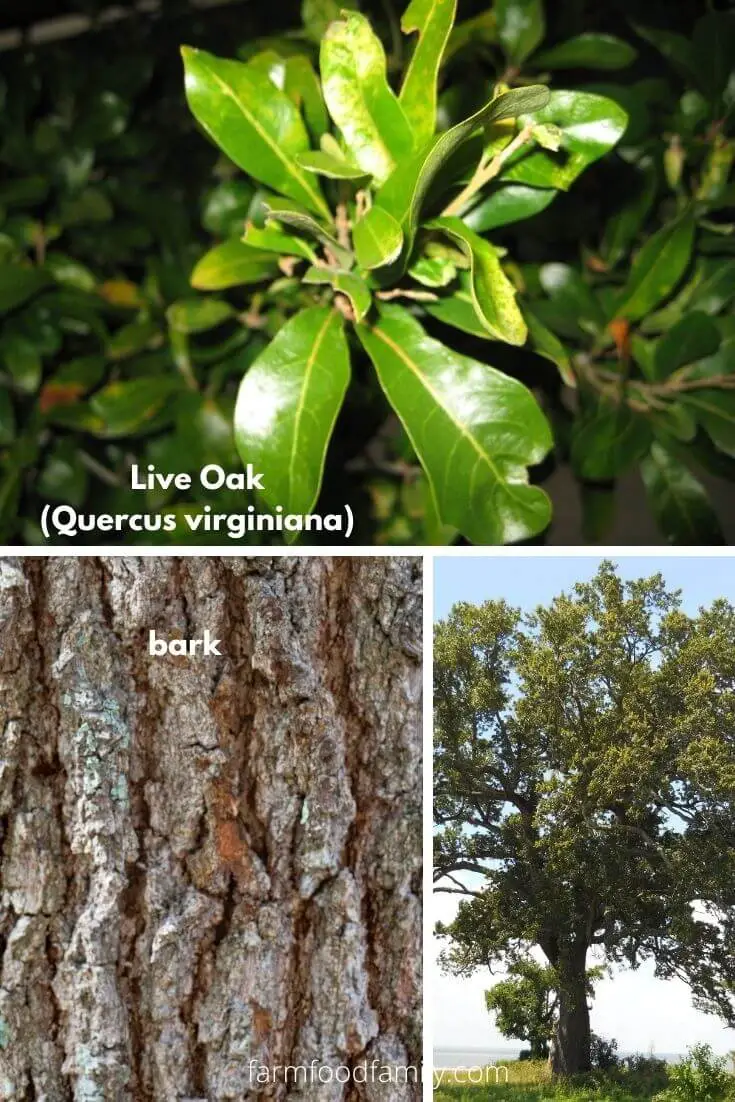
Live oak trees stand out for their unique characteristics, as they remain lush and green year-round through a process of constant leaf renewal. When environmental conditions are favorable, these evergreen trees exhibit an unusual growth pattern. They begin by extending their sprawling branches towards the ground before shooting upwards, gradually forming impressive canopy structures.
As they mature, live oaks can reach heights of around 50 feet, with their crowns spreading up to 80 feet in diameter. The trees’ sturdy trunks can grow up to 150 feet tall, a testament to their robust nature. One notable feature of live oak trees is the production of tapered acorns, which serve as an essential food source for various birds and animals. These trees thrive in shaded areas and environments with salt-affected soils.
However, they are not well-suited for regions with freezing temperatures, making them less suitable for high-latitude winter zones.
Oregon White Oak (Quercus garryana)
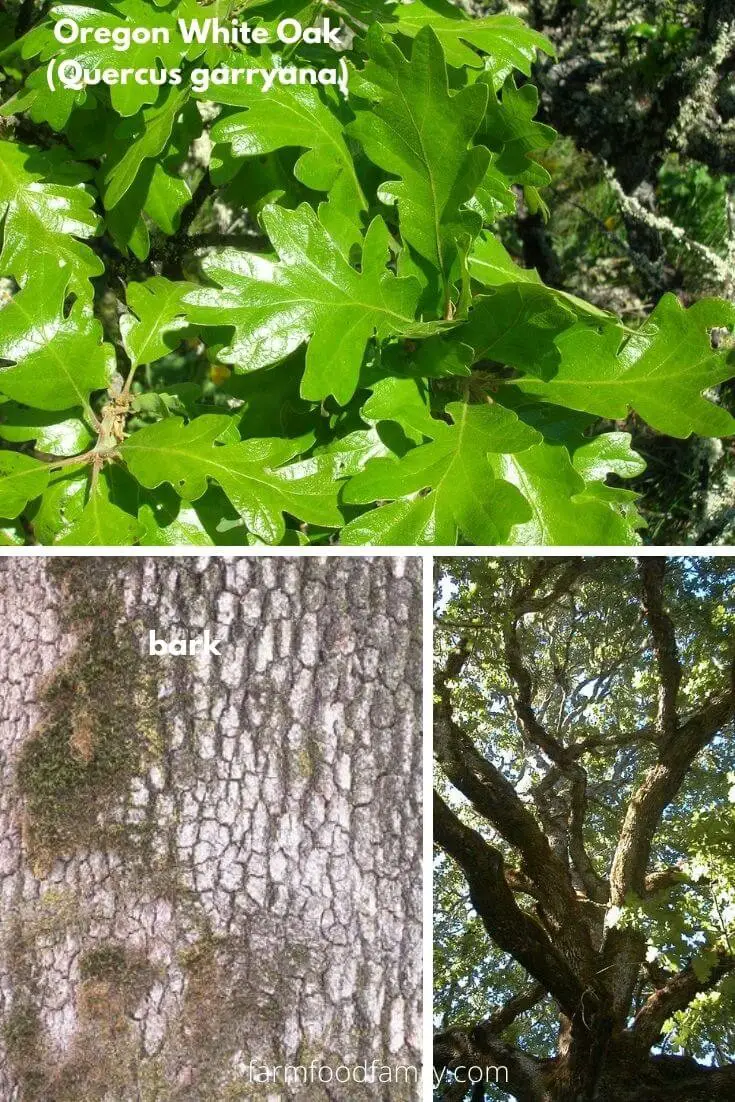
Oregon white oak trees are deciduous and exhibit varying growth patterns based on weather conditions. They can shed their leaves and regrow them when climate favors it. Native to western North America, these oaks boast massive branching trunks with broad crowns. Mature Oregon white oaks typically reach heights of 50-90 feet. Notably, they are intolerant of shade due to limited branch spread, but surprisingly, they are fire-resistant – although smaller trees may succumb to intense heat.
Drought-tolerant and thriving in wet areas near rivers and water bodies, the tree requires winter moisture while withstanding summer drought. This rapid-growing oak is a vital food source for animals, producing sturdy wood with exceptional strength that resists abrasion, making it ideal for construction purposes. Additionally, Native Americans have long relied on Oregon white oaks as a staple food source, consuming delicious acorns raw, dried, or cooked.
Shumard Oak (Quercus shumardii)
The Shumard oak is a rapid-growing and drought-resistant tree that excels in urban environments. Its adaptability makes it an ideal choice for parks, residential yards, and streets. When mature, the tree can reach impressive heights of 40 to 60 feet, making it a striking feature in any landscape. The tree’s tolerance for acidic and alkaline soils allows it to thrive in various soil conditions, as long as the soil is well-drained and has normal moisture levels.
One of the Shumard oak’s most notable characteristics is its deciduous nature, which results in a vibrant display of red foliage during autumn before the leaves eventually fall. The tree’s distinctive leaves are shaped like oaks, featuring dark green hues that set it apart from other species. As the Shumard oak ages, its crown gradually becomes more rounded, making it an excellent choice for providing shade.
The Shumard oak is also notable for producing some of the largest acorns within the oak family, with diameters reaching up to 1.5 inches. These nutritious acorns serve as a vital food source for various bird species and are even used by humans in craft projects.
Southern Red Oak (Quercus falcata)
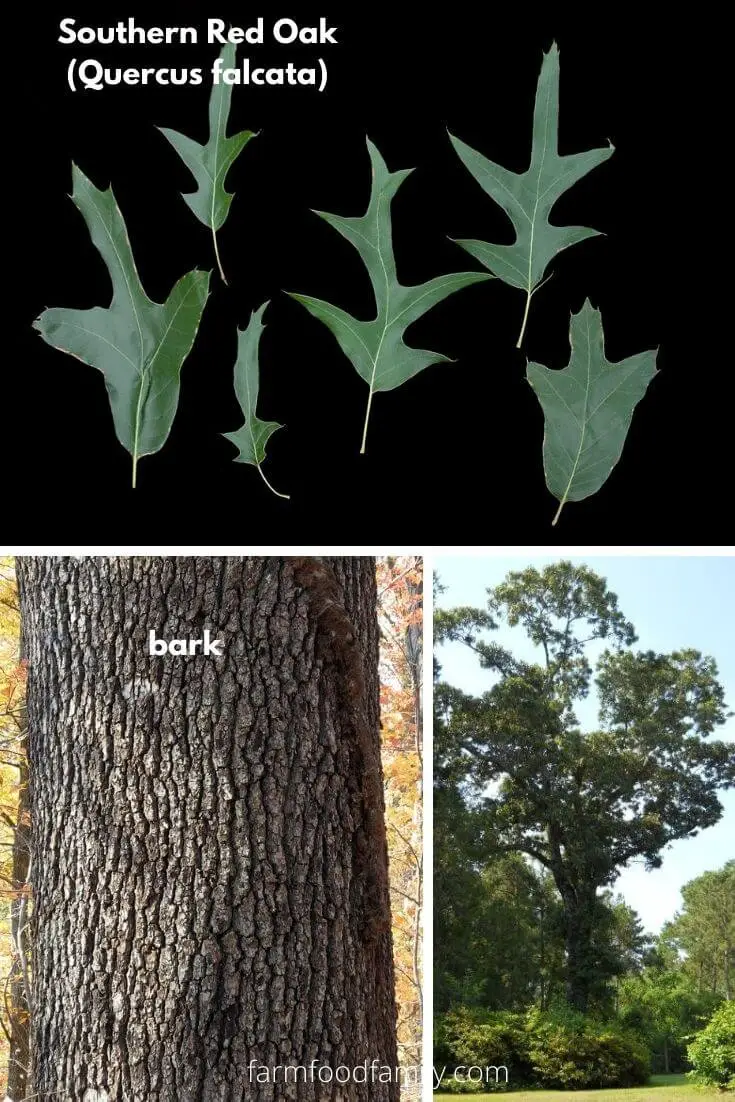
The Southern red oak, also known as the Spanish Oak, is a member of the red oak species. In its natural habitat, this majestic tree can thrive in poor soil conditions, such as hilltops and slopes. It’s capable of growing to impressive heights of 60 to 80 feet, providing excellent shade and a rounded canopy. To conserve water, the Southern red oak exhibits a unique characteristic: straight growth with well-spaced branches that are strongly attached to the tree.
The wood of this magnificent tree is highly prized for crafting home furniture, boasting a density of around 60 pounds per cubic foot. Its ring-porous to semi-ring porous texture adds to its value as a sought-after timber. Moreover, the acorns produced by the Southern red oak are a vital food source for both birds and mammals, making it an invaluable resource in the ecosystem.
Northern Red Oak (Quercus rubra)
Northern red oak is a ubiquitous species in North America, characterized by its rapid growth rate, particularly in compacted soil. Its adaptability to pollution makes it an ideal candidate for urban landscapes. When mature, the tree can reach heights of 65 to 70 feet and spread up to 45 feet, showcasing its majestic presence.
One of the most striking features of northern red oak is its autumnal display.
As leaves transition from green to russet red or vibrant red, they create a breathtaking spectacle that has captivated many a nature enthusiast. Throughout the growing season, the tree’s dark green foliage provides a lush canopy, while its rounded shape imbues it with an air of elegance.
Northern red oak is often found in rocky and sandy areas, where it thrives in moist environments.
Its value to wildlife lies in the delectable acorns it produces, which are a vital source of sustenance for many species. Moreover, its sturdy wood has numerous applications, including flooring, furniture, railroad ties, and fence-posts.
Willow Oak (Quercus phellos)
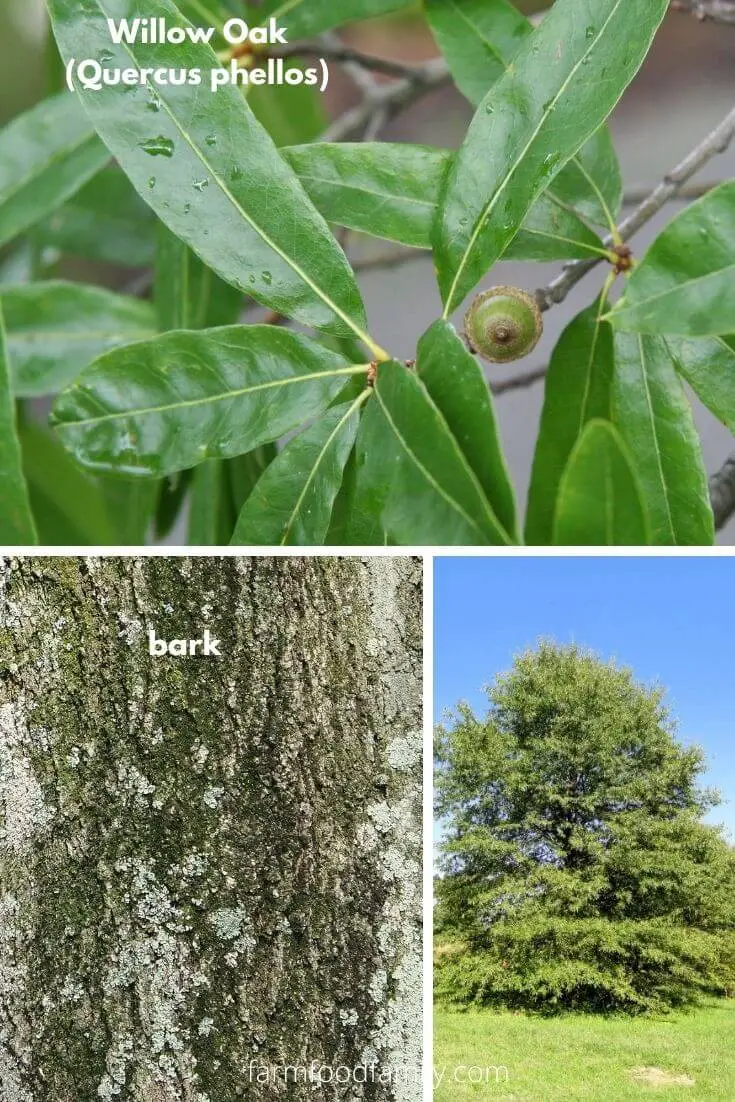
While willow oak may not initially stand out as a typical oak due to the unique appearance of its leaves, it’s actually part of the red oak group with distinct characteristics. The leaves are notable for being thin and straight, lacking the traditional lobes found in other oaks. Willow oak trees often thrive on river banks, streams, and flood plains, making them well-suited for urban settings where they can grow to a manageable height.
One of the tree’s most impressive features is its ability to tolerate drought and resist pollution, pests, and other environmental stressors. When mature, willow oak can reach heights of up to 120 feet, although it typically grows around 60-70 feet tall in most environments. Its shallow roots also make it an ideal candidate for transplanting. While the tree’s size is certainly impressive, its large stature means it may not be the best fit for traditional gardening settings.
Overcup Oak (Quercus lyrata)
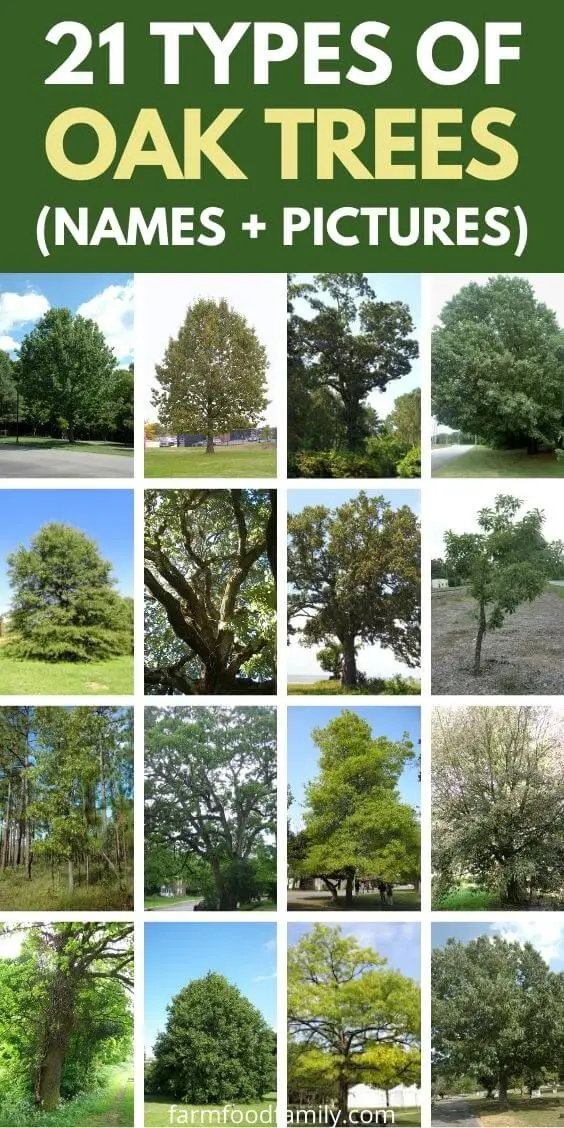
The overcup oak is a striking tree that can reach up to 80 feet when mature, despite its slow growth rate. Its reddish bark and leathery dark green leaves make it a standout in any landscape. The fall foliage adds an extra layer of appeal, with the tree producing rich yellow-brown hues. As such, many people choose to plant overcup oak as an ornamental addition to their gardens.
One of its greatest advantages is its ability to thrive in poorly drained soil and tolerate drought and cold temperatures. This makes it an ideal choice for landscapes such as golf courses and parks. However, gardeners should be aware that the tree can grow too tall and wide, potentially overwhelming smaller spaces. The overcup oak has also been found to have medicinal uses, making it a valuable resource for humans.
Its wood is similarly prized for its durability, hardness, and toughness, making it suitable for various applications including furniture-making and construction. Ultimately, oak trees like the overcup oak are highly valued for their beauty, functionality, and ecological importance. Whether used as a garden tree or in larger landscaping projects, they offer a range of benefits to both humans and animals alike.
Related Posts
Discovering the wonders of online plant nurseries is just the beginning. With a vast array of species to choose from, you can transform your outdoor space into a lush oasis. But did you know that trees have so much more to offer than just aesthetics? From boosting property values to providing essential habitats for wildlife, the benefits of trees are far-reaching. In fact, arborists play a crucial role in tree care, ensuring these natural wonders continue to thrive.
Whether you’re looking to become an expert in tree care or simply want to learn how to grow your own organic blueberry plants, there’s something for everyone when it comes to the world of trees.



